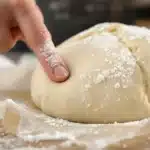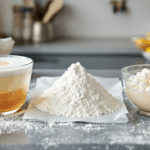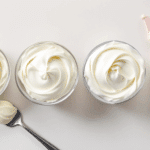Dive into the world of artisan bread baking forums, blogs, or advanced recipes, and you’ll inevitably encounter fervent discussions about “hydration levels.” Bakers toss around percentages like 70%, 75%, 80%, even upwards of 90%! This focus on hydration might seem like arcane jargon or unnecessary hype to a beginner. What does it actually mean? Why are wetter, stickier doughs often lauded? And how does the amount of water fundamentally change the bread you bake?
The concept of hydration is far more than just baker-speak; it’s one of the most critical factors influencing dough consistency, handling characteristics, fermentation speed, and, perhaps most visibly, the final crumb structure and crust of your artisan loaf. Understanding hydration—what it is, how it’s measured, and its profound effects—demystifies why some doughs are slack and sticky while others are stiff and manageable, and empowers you to intentionally manipulate water content to achieve specific results in your bread baking journey.
Defining Dough Hydration: The Baker’s Percentage Explained
In baking terminology, hydration refers specifically to the amount of water in a dough relative to the amount of flour, expressed as a percentage. The calculation relies on the system of baker’s percentages, where the total weight of flour in the recipe is always set as 100%. All other ingredients are then expressed as a percentage of that flour weight.
The Calculation:
Hydration % = (Total Weight of Water / Total Weight of Flour) × 100
Example:
- A recipe calls for 500 grams of flour and 350 grams of water.
- Hydration = (350g Water / 500g Flour) × 100 = 70%
Why Weight is Absolutely Crucial: This calculation, and indeed the entire concept of baker’s percentages, only works reliably when using weight measurements (grams are preferred for precision, but ounces work too). Measuring flour by volume (cups) is far too inconsistent due to compaction issues, making accurate hydration calculations impossible. This is yet another compelling reason why a digital kitchen scale is non-negotiable for serious bread baking.
What Counts Towards Hydration? While the primary liquid is usually water, other significant liquid ingredients can sometimes be factored into the “total hydration” calculation if the recipe developer specifies it. Milk (which is mostly water), beer, or even liquid sourdough starter contributions might be included in some contexts. However, unless stated otherwise, hydration typically refers just to the percentage of added water relative to the flour weight.
The Impact of Water: How Hydration Shapes Your Dough & Bread
Varying the percentage of water has a cascade of effects on nearly every aspect of your dough and the resulting loaf:
- Dough Consistency & Handling (Stickiness Factor): This is the most immediate effect bakers notice.
- Low Hydration (approx. 50-60%): Results in a stiff, dense dough that feels relatively dry. It’s easy to handle, requires significant effort to knead, and isn’t very sticky. Think of bagel dough or some pretzel doughs.
- Medium Hydration (approx. 60-70%): Creates a pliable, moderate dough that is still relatively easy to handle and knead using traditional methods. It will feel slightly tacky but manageable. This range is common for standard sandwich loaves, soft dinner rolls, and some simpler artisan styles.
- High Hydration (approx. 70-85%+): Produces a slack, wet, and noticeably sticky dough. It can be challenging to handle, often sticking to hands and surfaces. Traditional kneading is difficult; techniques like slap-and-folds or stretch-and-folds are generally required for gluten development. This range is associated with many rustic artisan loaves, ciabatta, some baguettes, and no-knead breads, prized for their resulting crumb structure.
- Gluten Development: Water is essential to hydrate the gluten-forming proteins (gliadin and glutenin) in flour. Higher hydration allows these proteins to move more freely and align more easily, potentially facilitating gluten development with less mechanical work (kneading). However, very high hydration can also result in a weaker overall gluten network if not properly developed through folds and time.
- Fermentation Rate: Yeast and enzymatic activity generally proceed more rapidly in wetter environments. Higher hydration doughs often ferment faster than lower hydration doughs, assuming other factors (like temperature and yeast amount) are equal.
- Crumb Structure (The Reason for the “Hype”): This is where hydration makes a visually dramatic difference.
- Higher Hydration (75%+) is strongly associated with a more open, irregular crumb structure featuring larger, varied holes (alveoli). The extra water turns into more steam during baking, which pushes against the developing gluten network more forcefully, creating larger pockets. The slacker dough itself offers less resistance to gas bubble expansion during proofing and oven spring. This is the desired texture for breads like ciabatta and many rustic sourdough loaves.
- Lower Hydration (below 65-70%) typically results in a tighter, finer, more uniform crumb structure. The stiffer dough restricts the expansion of gas bubbles, and less internal steam is generated during baking. This is characteristic of sandwich bread, bagels, or pretzels.
- Crust Characteristics: Hydration influences the crust too. Higher hydration doughs often bake into loaves with thinner, crispier, sometimes more blistered crusts, partly due to the increased steam production interacting with the surface during the initial baking phase. Lower hydration doughs may yield thicker, potentially chewier crusts.
- Keeping Quality: Breads with higher hydration tend to retain moisture better and may feel fresh for slightly longer than their lower-hydration counterparts.
Navigating the Spectrum: Typical Hydration Ranges for Different Breads
Understanding typical hydration levels for various bread styles provides context (note: these are general ranges and can vary):
- Very Stiff Doughs (Bagels, Pretzels): 50-57%
- Standard Sandwich Loaves, Soft Rolls: 60-65%
- Basic Enriched Doughs (Challah, some Brioche): 60-70% (Note: eggs and butter also contribute richness/softness, affecting perception)
- Beginner/Intermediate Artisan Loaves (Sourdough or Commercial Yeast): 65-75% (A good starting range – manageable handling with potential for some openness)
- Rustic Artisan Breads (Ciabatta, many Sourdoughs, some Baguettes): 75-85% (Noticeably wet and sticky, potential for very open crumb)
- Very High Hydration / No-Knead Styles: 85% and even above (Often more like a thick batter than a dough, requiring specific handling and often baking in contained vessels like Dutch ovens)
Important Note on Flour Type: Different flours absorb water differently! Whole wheat and rye flours are much thirstier than white bread or all-purpose flour due to their higher bran and fiber content. Therefore, a 75% hydration dough made entirely with whole wheat flour might feel as stiff or even stiffer than a 65% hydration dough made with only white flour. When incorporating whole grains, you generally need to increase the hydration percentage to achieve a comparable dough consistency. Always consider the flour blend when evaluating a hydration percentage.
Taming the Stickiness: Tips for Handling High-Hydration Dough
Working with wet, sticky dough (typically 75% hydration and above) is often where beginners feel intimidated. However, with the right techniques, it becomes much more manageable:
- Use Water or Oil, Not Excess Flour: Instead of constantly dusting your hands and surface with flour (which significantly lowers the actual hydration of your dough), work with lightly wet hands or lightly oiled hands. This creates a temporary barrier preventing the sticky dough from clinging to you.
- Employ Your Bench Scraper: This simple tool is invaluable. Use it to lift, turn, fold, and manipulate the sticky dough on your work surface cleanly and efficiently, minimizing direct hand contact.
- Master Appropriate Techniques: Forget traditional kneading for very wet doughs. Embrace methods designed for them:
- Stretch and Folds: Performed periodically in the bowl during bulk fermentation, this gently develops gluten without extensive handling.
- Slap and Folds (French Folds): An effective (though initially messy-looking) countertop technique for quickly developing gluten in slack doughs.
- Container Fermentation: Performing bulk fermentation and stretch-and-folds directly within a lightly oiled, straight-sided container minimizes countertop mess and makes handling easier.
- Strategic Use of Flour (Shaping ONLY): While minimizing flour during bulk fermentation and folding is key, you will need to use a generous amount of flour on your work surface and the top of the dough during the final shaping stage. This allows you to create surface tension and shape the slack dough without it sticking uncontrollably. Gently brush off any excess loose flour before placing the dough for its final proof.
- Proofing Support is Crucial: High-hydration doughs lack the internal structure to hold a defined shape on their own during the final proof. Proof them in well-floured bannetons (proofing baskets made of cane or wicker) or in bowls lined with heavily floured cloths (a 50/50 mix of rice flour and bread/AP flour works well to prevent sticking).
- Cold Proofing Helps Handling: Refrigerating (retarding) high-hydration dough after shaping makes it significantly firmer and much easier to handle, score cleanly, and transfer into your hot baking vessel (like a Dutch oven).
- Practice and Patience: Handling wet dough definitely has a learning curve. Don’t be discouraged if your first few attempts feel messy. With practice, you’ll develop the necessary light touch and confidence.
Finding Your Hydration Sweet Spot
While the allure of the super-open crumb seen in very high-hydration loaves is strong, jumping straight into 85%+ hydration as a beginner can be frustrating.
- Start Moderately: Begin your artisan bread journey in the 65% to 75% hydration range. This allows you to produce loaves with potentially nice, moderately open crumbs while still being relatively manageable to handle and shape using basic techniques.
- Increase Gradually: As you become more comfortable with dough handling, fermentation cues, and shaping techniques, gradually increase the hydration in your recipes by a few percent at a time. Observe how the dough feels different and how the final crumb structure changes.
- Consider Your Flour: Remember to adjust hydration upwards if you are incorporating significant amounts of whole grain flours.
- Define Your Goal: The “perfect” hydration isn’t a single number; it depends entirely on the style of bread you want to achieve (tight crumb for sandwiches vs. airy holes for dipping in oil) and your personal handling preference.
Conclusion: Hydration as a Tool
Baker’s hydration – the simple ratio of water to flour by weight – is a fundamental concept with profound implications for your bread. It directly governs the stickiness and handling characteristics of your dough, influences the rate of fermentation, and, most significantly, shapes the final crumb structure and crust of your loaf. Higher hydration generally yields stickier dough needing gentler handling but rewards with a more open, airy crumb and often a thinner crust. Lower hydration results in stiffer, easier-to-handle dough but produces a tighter, more uniform crumb.
Mastering hydration begins with accurate measurement using a scale. From there, it involves understanding how different percentages feel and behave, learning techniques suitable for wetter doughs (like stretch-and-folds and using wet hands or scrapers), and choosing hydration levels appropriate for the desired bread style. Don’t fear the stickiness associated with higher hydration; view it instead as a tool you can learn to wield to create loaves with incredible texture and character. Understanding and controlling hydration is a key step on the path from basic bread maker to confident artisan baker.







